Key takeaways:
- Support for trauma survivors must prioritize active listening and creating a safe space for sharing experiences, fostering community and connection.
- Crisis simulation exercises enhance emotional intelligence, empathy, and the ability to respond effectively during real-life situations of trauma.
- Collaboration and adaptability are essential in providing effective support, as each trauma situation is unique and requires a team approach.
- Consistent follow-up and genuine presence are crucial aspects of trauma recovery, highlighting the importance of maintaining a supportive relationship over time.
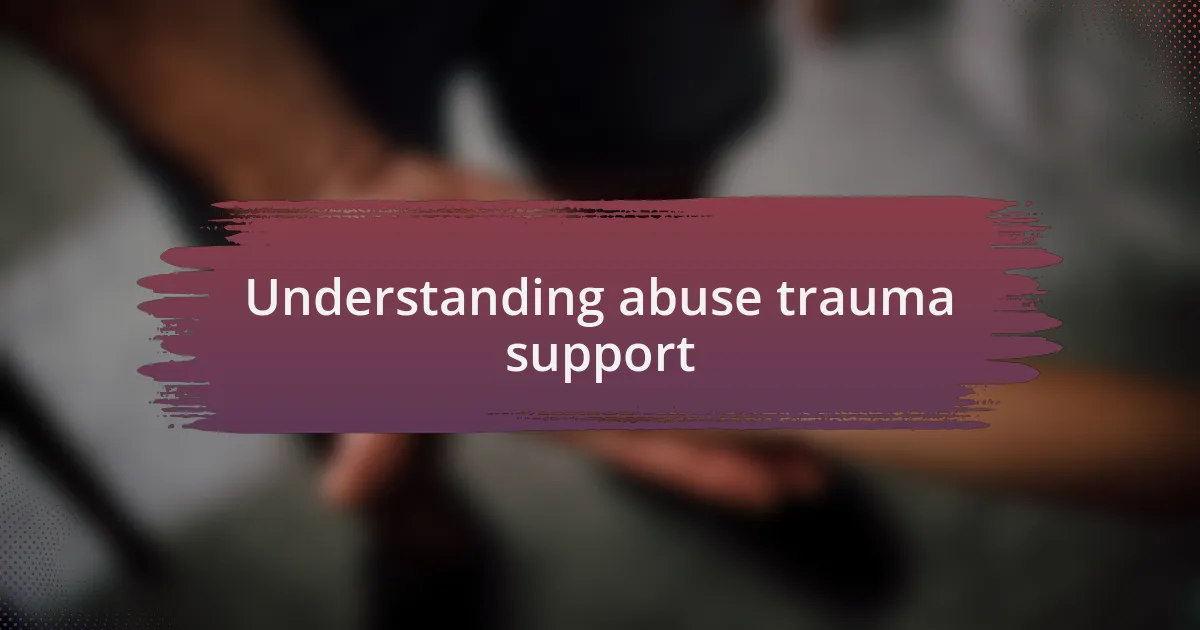
Understanding abuse trauma support
Understanding abuse trauma support is essential for those affected by various forms of abuse. I remember the first time I spoke to a survivor about their experience; the raw pain in their voice made me realize that support isn’t just about providing resources—it’s about fostering a safe space for healing. How can we truly help if we don’t listen deeply to their stories?
Support encompasses more than just professional guidance; it’s about community and connection. When I facilitated a support group, I witnessed the power of shared experiences in healing; there was a palpable sense of relief when someone voiced a struggle that others also faced. In these moments, it became clear that the journey is less daunting when you’re not walking it alone.
The journey towards healing from abuse trauma is often filled with setbacks and triumphs. I recall meeting a participant who, after several sessions, found the courage to reclaim her narrative and share it publicly. This transformation highlighted a crucial component: support must be unwavering and adaptable, recognizing that healing isn’t linear and that every step forward, no matter how small, matters. How do we ensure that our support is relevant and responsive? By continually educating ourselves and listening to the needs of those we aim to support.
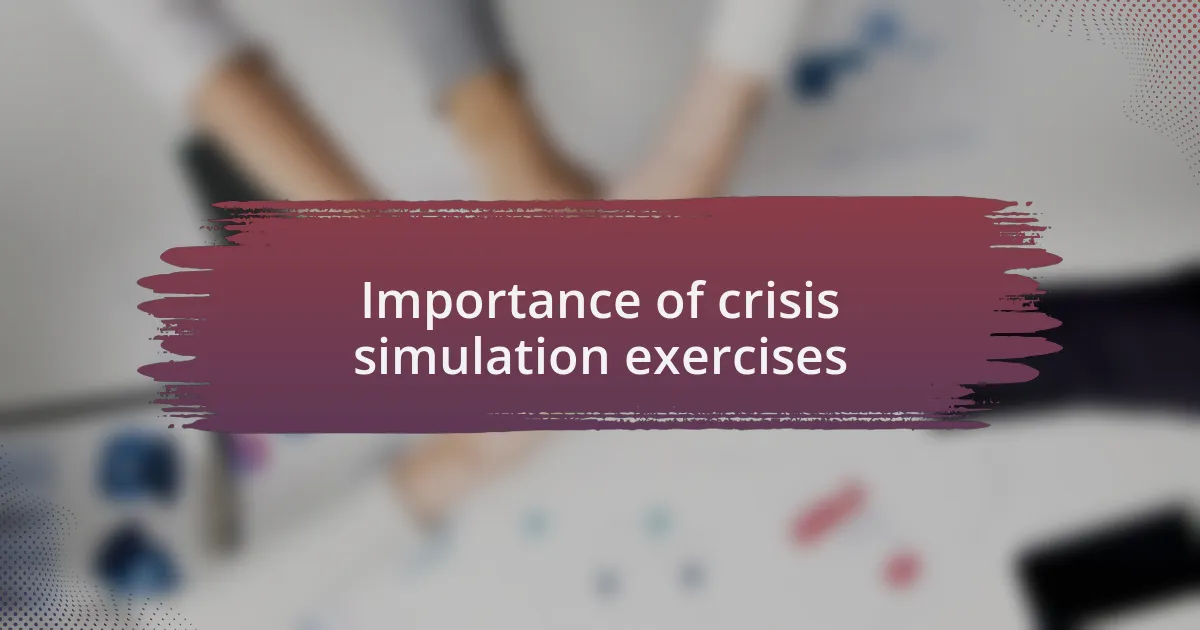
Importance of crisis simulation exercises
Crisis simulation exercises play a pivotal role in preparing individuals for real-life scenarios they may encounter in situations of abuse. I vividly remember participating in a simulation that involved a staged incident of disclosure, which allowed me to practice my responses in a safe environment. This experience underscored the importance of being ready—not just in knowledge, but also emotionally—when supporting someone in distress.
Perhaps one of the most striking aspects of these exercises is how they reveal our instinctive reactions in high-pressure situations. During a recent drill, I found myself grappling with feelings of anxiety and uncertainty, yet it became a powerful learning moment. How can we anticipate what a survivor needs if we don’t first confront our own emotional responses? The simulations challenge us to confront those feelings, equipping us with the awareness to respond more effectively in genuine settings.
Through crisis simulation exercises, we can foster empathy and enhance our communication skills, which are vital when supporting trauma survivors. Reflecting on the details discussed during these drills, I realized how significant even subtle cues can be—like a trembling voice or averted gaze. These insights drive home the point that understanding trauma requires more than just theoretical knowledge; it necessitates practice and real-world awareness. Are we genuinely prepared to support others, or do we need more practice in navigating these critical emotional landscapes?
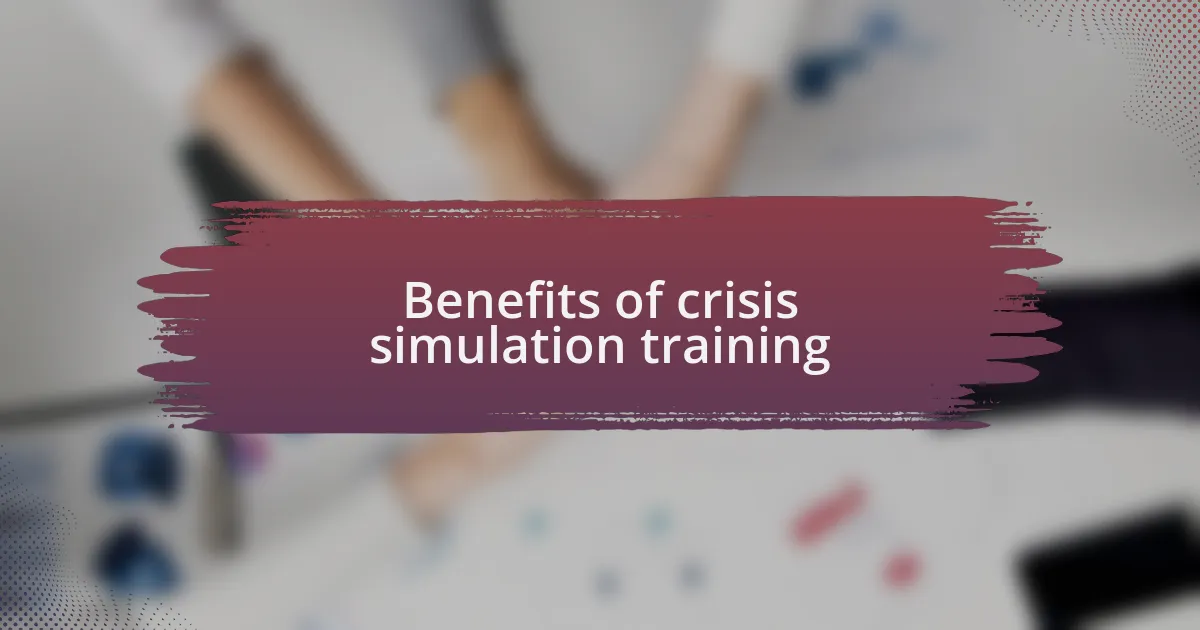
Benefits of crisis simulation training
Engaging in crisis simulation training comes with profound benefits that extend beyond basic knowledge. I recall a particularly intense exercise where we role-played various scenarios, and I found myself stepping into the shoes of a survivor. It struck me how crucial it was to listen actively, noticing the smallest details that could indicate distress. How often do we overlook these silent signals in everyday interactions?
Moreover, these simulations foster a sense of teamwork and collaboration among participants. During one session, I worked closely with colleagues, strategizing our approaches to support a mock survivor. That shared experience heightened our understanding of one another’s strengths and weaknesses in high-stress situations. Isn’t it fascinating how collaboration can transform not just our skills but also build a network of trust that is essential when dealing with trauma?
Perhaps the greatest takeaway for me was the emotional resilience I developed through these exercises. Facing difficult questions from “what if” scenarios made me uncomfortable, yet this discomfort paved the way for growth. I learned that it’s okay to feel vulnerable; in fact, embracing that vulnerability can make us more empathetic supporters. If we are to help someone navigating their darkest moments, shouldn’t we first learn to embrace our own uncertainties?
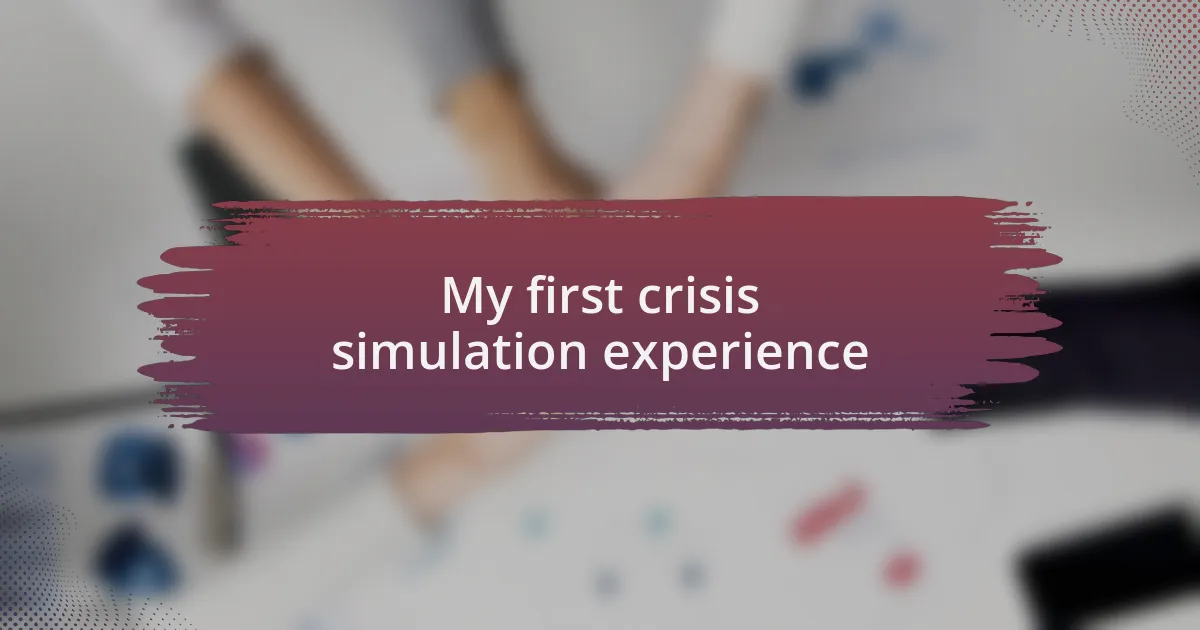
My first crisis simulation experience
Participating in my first crisis simulation was both exhilarating and nerve-wracking. I remember walking into the room, feeling a mix of excitement and anxiety. There was a palpable sense of urgency, as we were briefed on the scenario—a simulated domestic abuse situation. I vividly recall my heart racing as we began, the weight of responsibility heavy on my shoulders as I took on the role of a support person.
As the exercise unfolded, I found myself wrestling with my own fears and inadequacies. There was a moment when I had to ask the mock survivor about their feelings, and I hesitated, wondering if I was probing too deeply. It struck me how delicate these conversations are and how critical my approach would be in a real crisis. I think back on that moment often; it made me realize the importance of combining compassion with careful questioning. How do we balance the need for information with sensitivity?
By the end of that simulation, I understood that crisis situations demand not just knowledge but also emotional intelligence. I felt a rush of relief and pride after receiving feedback from my peers, who pointed out strengths I hadn’t recognized in myself. Reflecting on that experience, I see it as a pivotal moment in my journey. It taught me that we can learn so much about ourselves when we step outside of our comfort zones. How transformative is it to face our own discomfort for the sake of supporting others?

Lessons learned from simulations
In my experience, one of the most crucial lessons from crisis simulations is the significance of active listening. During one exercise, a participant playing a survivor shared their story, and I realized just how profound silence can be. I learned to resist the urge to fill pauses with my own thoughts. Why is listening so impactful? Because it fosters a deeper connection and shows validation, which is essential for someone navigating trauma.
Another key takeaway from simulations is the necessity of adaptability. I recall a moment when the scenario took an unexpected turn, and I had to adjust my approach on the fly. This taught me that each crisis is unique, demanding flexibility and quick thinking. Why is adaptability vital in these situations? Because the ability to pivot can mean the difference between helping someone feel safe or leaving them feeling unseen.
Moreover, I discovered the power of collaboration during these exercises. Working alongside peers in a simulated environment highlighted the importance of teamwork. I remember how sharing perspectives not only enriched our understanding but also brought about solutions we wouldn’t have formed individually. Isn’t it interesting how collaboration can enhance our effectiveness? It made me acknowledge that support isn’t just about individual strength; it’s also about harnessing the collective wisdom and compassion of a team.
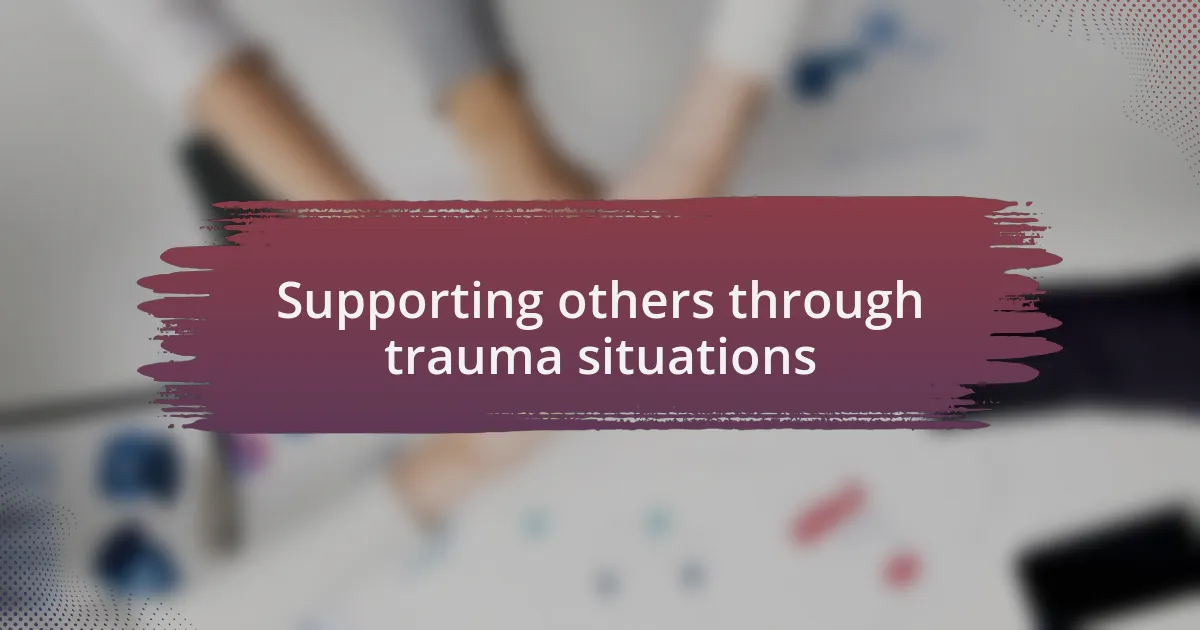
Supporting others through trauma situations
Supporting someone through a trauma situation requires genuine presence. I remember a time when a friend confided in me about their experience with abuse. Just being there, holding their hand without rushing to offer solutions, made them feel seen. How often do we underestimate the value of just existing alongside someone in pain? It was a moment that deepened our bond and reminded me that sometimes the greatest support comes from simply being a steady presence.
Another fundamental aspect is offering empathy without judgment. I encountered a participant during a simulation who expressed feelings of shame regarding their experience. I found myself reflecting on the times I’ve judged my own reactions to trauma. How crucial it is to create a safe space where individuals can share their stories without fear of criticism! Embracing vulnerability not only fosters healing but cultivates an environment where healing becomes possible.
Finally, follow-up support is vital in trauma recovery. After that initial conversation with my friend, I made it a point to check in regularly. It wasn’t always about discussing their trauma; sometimes, it was just sharing a laugh over coffee. This consistency not only reassured them of my support but also reminded me of the power of sustained compassion. Isn’t it fascinating how small, regular gestures can make a profound impact on someone’s healing journey?